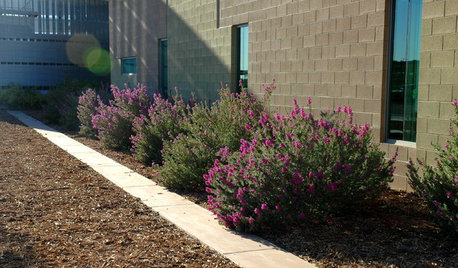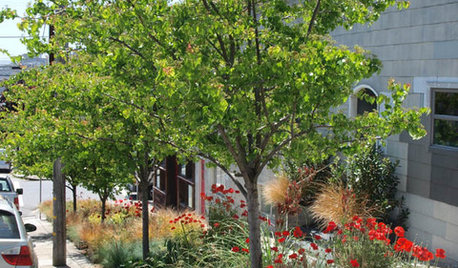Removing a crepep myrtle
landdawg
15 years ago
Related Stories

DECORATING GUIDESHouzz Tour: Arts and Crafts Cottage Gets a Lively Remake
An interior designer uses color, light and historical touches to brighten up a 1920s Sydney home
Full Story
GARDENING GUIDESGreat Design Plant: Sambucus Nigra
Common elderberry is a highly adaptable shrub from the eastern U.S., with berries galore for wildlife and humans alike
Full Story
SAVING WATERHouzz Call: Are You Letting Go of Your Lawn?
Many facing a drought are swapping turf for less thirsty plantings. If you’re one of them, we’d like to hear about it
Full Story
GARDENING AND LANDSCAPINGGrow a Lush Privacy Screen
No need to wait forever for patio privacy the green way. These 10 ideas will get your screening up and running in no time
Full Story
FALL GARDENING6 Trees You'll Fall For
Don’t put down that spade! Autumn is the perfect time for planting these trees
Full Story
GARDENING GUIDESHow to Avoid Overcrowded, Overpruned Shrubs
Go for a more natural look that’s easier and less expensive to maintain by giving your plants the right amount of growing room
Full Story
LANDSCAPE DESIGNPretty Trees for Patios, Paths and Other Tight Spots
Choose trees for their size, shape and rate of growth — or shape them to fit your space. Here's how to get started
Full Story
CURB APPEALTake Your Hell Strip to Heavenly Heights: 8 Design Ideas
Trade weedy dirt and trash for a parking strip filled with wispy grasses, low-growing flowers and textural trees
Full Story
CONTAINER GARDENS3 Steps to Creating Quick, Easy and Colorful Succulent Containers
Take a bright container, add a colorful succulent or two and have a professional, summery design in minutes
Full Story
REMODELING GUIDESOne Guy Found a $175,000 Comic in His Wall. What Has Your Home Hidden?
Have you found a treasure, large or small, when remodeling your house? We want to see it!
Full StorySponsored






rjinga
vicki7
Related Professionals
Foothill Ranch Landscape Architects & Landscape Designers · Tempe Landscape Contractors · Cerritos Landscape Contractors · Kailua Landscape Contractors · Long Branch Landscape Contractors · Paramus Landscape Contractors · Rockland Landscape Contractors · Forest Hill Landscape Contractors · Raytown Landscape Contractors · Fairmount Fence Contractors · Marana Fence Contractors · Pensacola Fence Contractors · East Palo Alto Fence Contractors · Mableton Window Contractors · Northbridge Window ContractorsBumblebeez SC Zone 7
nwgatreasures
girlgroupgirl
rosiew
laylaa
joebobjones
brandon7 TN_zone7